The Mary Sue Interview: A Girl Walks Home Alone At Night Director Ana Lily Amirpour & Star Sheila Vand
Talking Iranian lady vampire flicks is always the best.
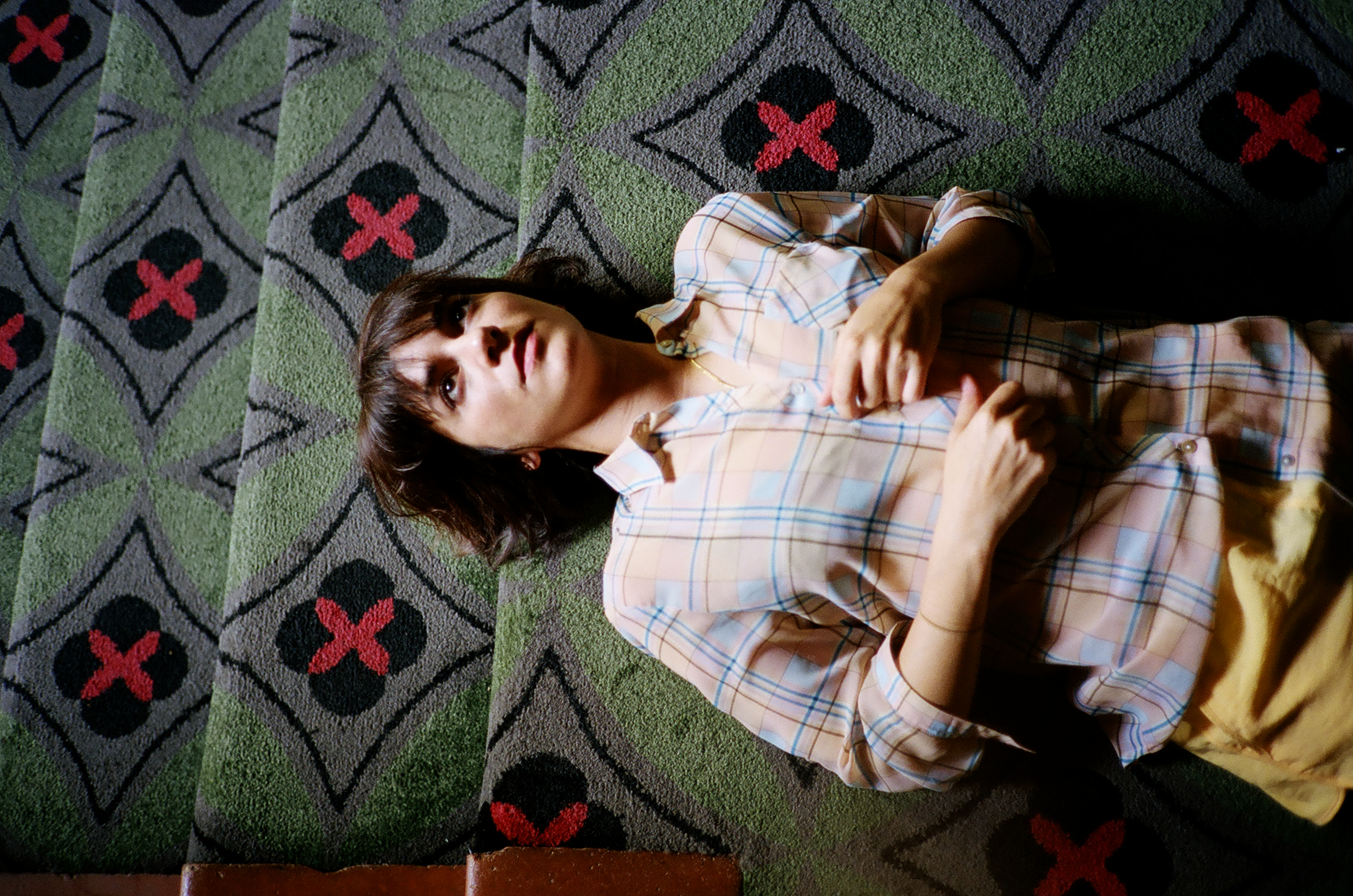
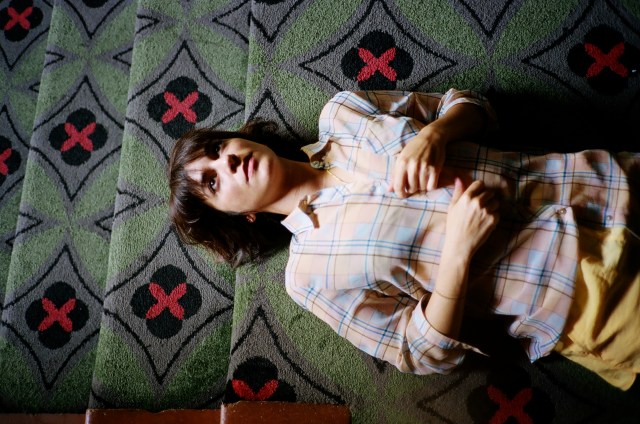
A Girl Walks Home Alone At Night, in theaters now, is one of the coolest movies of the year. Written and directed by Ana Lily Amirpour, the film stars Sheila Vand as a chador-wearing vampire preying on the men of Bad City in a mash-up of western and vampire film, which is also surprisingly funny and romantic. Vand and Amirpour were in New York this week for the release of the film, and talked about their mysterious character, dangerous love, and the benefits of working with a cat on set.
Lesley Coffin (TMS): The film was made in California, but seems to be set in Iran. Can you talk a bit about the importance of setting in the story?
Ana Lily Amirpour: Well, it is Iranian. It is an Iranian fairy tale. But in the sense that it is a fairy tale, the setting isn’t meant to be specific. The film should feel like a dream, a place in the mind. Like a Sergio Leone western town, it isn’t necessarily a specific town. He was an Italian, telling an Italian-American western story, but was shooting in Italy. There really are no rules, it just needs to be a place in the mind.
TMS: How did you create the character of The Girl and come to cast Sheila?
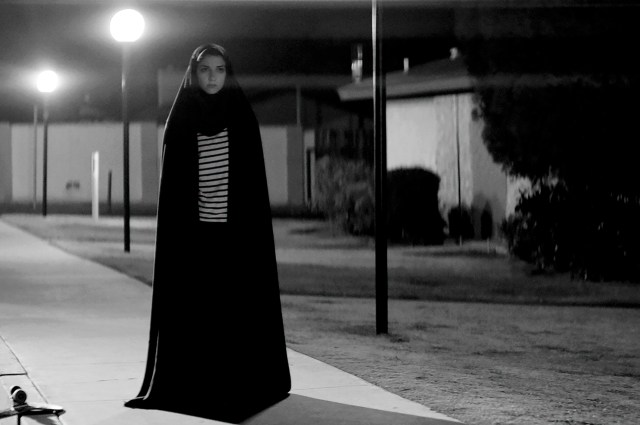
Amirpour: She was always the vampire from the time I first thought of the character. I did a short film first which [Vand] was going to do, but then she couldn’t so I had to cast someone else. But [Vand] is the vampire. And I didn’t even write the script until I talked to her and told her, I want to make an Iranian vampire western. And then I wrote the script and she said yes.
TMS: What is it abut [Vand] that made you think she had to play the vampire?
Amirpour: She just keeps killing people all the time and drinking their blood, and I just thought, we should film this [laughs]. I was just like, “Sheila, could you do that again?” It is hard to say, because the vampire is such a poetic, existential, lonely soul. I think they have a lot of power and mystery. They are old and young in extreme ways, and I feel that way about Sheila. I feel her eyes are just… look at them. They say everything. And the character is also this creature, and so much of what she does is in her physicality.
TMS: And I have to say, one of the things that first caught my attention is that you [Vand] really do command the screen almost by just starring into the camera.
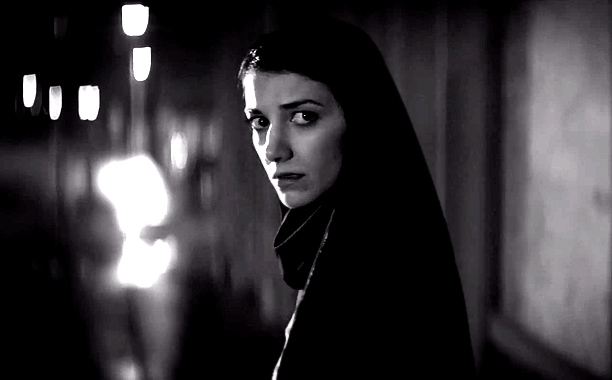
Sheila Vand: One of the cool things about having a part written for you is you feel you don’t have to try so hard. You were chosen and it was crafted around you. So I did have to do a lot more work than just be myself, but at the end of the day, I knew Lily had her reason for picking me, so as long as I stayed open and brought my spirit to it, I thought it couldn’t go wrong.
TMS: When we are talking about physicality of a character, every actor uses that differently. Some focus on mastering the internal stuff which informs how they move, while others focus on the external to inform the character’s mindset. Do you have a process for building characters?
Vand: It depends on the project and directors I’m working with. I like to talk about it as much as they will let me and have as much information as possible. And that is why I really liked working with Lily, because she meticulously plans, which means there is a lot for me to dive into and draw from. Regardless of how the movie was going to turn out, I became a more interesting person doing it, because of all the movies she made me watch and books she had me read. I’m an outside-in sort of actor. I don’t do as much emotional work, but I do work and want to know everything the character knows. And then I try to just let go.
TMS: What were some of the books and films you [Amirpour] had the cast and crew watch?
Amirpour: It depends on the role they played. There were some movies everyone watched together, like Rumble Fish, Wild At Heart, and Once Upon a Time in the West. And then there were other Sergio Leone westerns like Man without a Name, which [Vand’s] character kind of connected to in how mysterious they are and how the audience is always on their side, even if you aren’t sure if they are right. Gummo was another film we watched, because small towns are like fairy tales. And I had Sheila watch Nosferatu and read Anne Rice’s Interview with a Vampire, which had been my gateway to vampire stories. And cobras and cats are a big influence, so we spent a lot of time watching YouTube videos of cats and cobras and leopards.
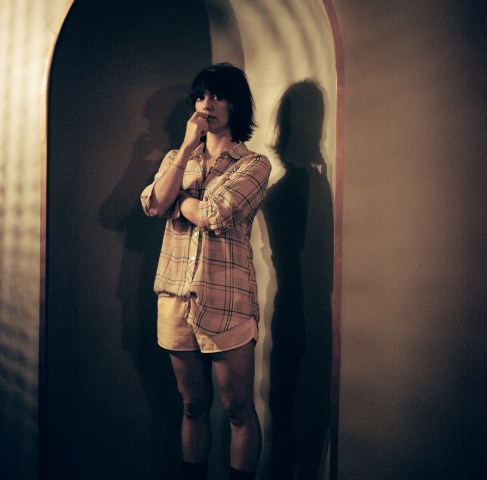
TMS: The cat plays a very important role. Did you want the vampire to find a soulmate in that cat?
Amirpour: What do you think?
TMS: I interpreted it that way, because it seems almost like the cat is leading his owner to her.
Amirpour: I like that.
TMS: The more technical question is how do you get a cat to act? I have a cat, they don’t take direction, so just getting the cat to look in the right direction at the right time seems to me, impossible.
Amirpour: They are hard to work with. But we had a very special little being and it was that cat’s destiny in life to make this movie. Sina [Sayyah] our producer, was urging me to use Masuka, and I didn’t want to and I finally agreed to…
Vand: Let him have an audition [laughs].
Amirpour: Basically. We did a camera test and Masuka is just this cat that likes to go into unfamiliar places and is curious about everything. We were joking yesterday that if you unzipped Masuka’s fur, a dog would come out.
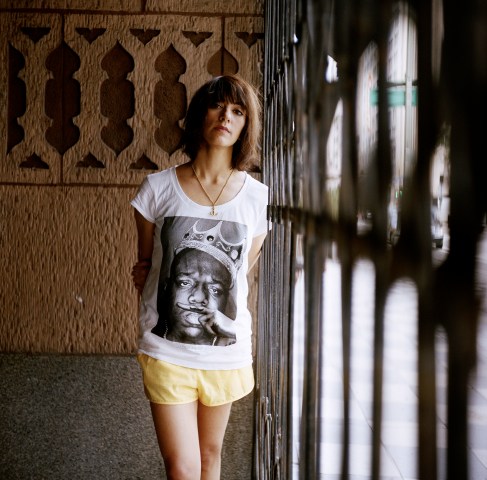
Vand: It was cool for me to act with an animal because, animals and babies, they are so unpredictable, they keep you a little bit on high alert and being more present because you are never sure what they are going to do. And I also used Masuka as an anchor because I was watching all these cat videos, modeling my character after tigers and cats. So when I found myself getting a little too stiff, I would just look over at him and relax.
TMS: Speaking of physicality, there is a scene of you dancing in your room and it is so cool, because it almost looks the way a baby would dance.
Vand: Oh, I love that
TMS: And you seem completely free and unaware of the camera.
Amirpour: She was. We were actually setting up the camera, talking over to the side, and a song was playing and I look over and she was just dancing to the song by herself and I said, “Turn the camera on, do it now!”
Vand: I did feel like I was exploring my body a lot in this role. There was always this feeling of, what it would be like to be a grandmother or old lady inside of an 19-year-old’s body. And how different time is. You may have dance a million times, but there still might have been 50 years between the last time you danced. And I had this idea that she felt the most human when she was dancing.
TMS: Did the chador effect how you played the scenes?
Vand: Absolutely. I didn’t feel like I was the girl until the chador would come on. And it is really technical too, because it is heavy, so you have to have good posture or else it would drag on the ground, especially on the skateboard. And I was also doing a lot underneath there, and I can imagine it is a lot like a bat, when they decide to take flight. There is a weight to the chador and way it moves that does feel like a cap. It is like Bruce Wayne when he puts on the cap.
Amirpour: It is kind of like at the end of Black Swan when she stars to change and gets the wings.
Vand: Yeah. I definitely felt a change when I put it on. I felt like a badass. I love that scene at the end when Arash when she puts the striped shirt back on. It is like she doesn’t just put the chador over anything.
Amirpour: She’s this really composed character. When she’s in the tub, she is the most like a creature. And then she puts on the striped shirt and she’s trying to act more like a person but she doesn’t go out without the chador. It is like Superman in that way, that he is Superman in the cape, Clark Kent, but when he strips down and gives up his powers in the second film, he’s just a human. I’m talking about Richard Donner’s Superman of course, not the other one I don’t want to even recognize.
TMS: You mention Wild at Heart, which is a favorite movie of mine, because it is this great love story, but at any minute, they can be destructive towards one another. And here, even though they do seem to be in love, you get the feeling that Arash isn’t completely safe with her.
Amirpour: Well, she eats people. Siegfried and Roy figured out that you might have a very loving tiger that will do your show a 100 times, but that 101th time, he is a fucking tiger that might bite you. That is the nature of the beast. I think love and the quest for love can compel you to do dangerous things. But I was always hyper-aware that she is a vampire and she is a creature. She’s a fucking killer. I always thought there was this tension, like having a tiger and bunny in the same room, and it is all about the missing information. With the pimp, he thinks he’s the tiger and she’s the bunny, but really it’s the other way around. So there is this tension in watching what will unfold. With Arash… Wild at Heart is a much farther-along love story, because these two haven’t even figured out where they are going to drive to.
Vand: We talked about how he, as a young man, he is like the best, freshest meat. The filet mignon for her. He’s young and virile and strong. His blood is really pumping through. He’s so alive and she’s just hanging on by a thread. And so, some times the best love is most dangerous. And it is scary falling in love. It is really scary and does sometime feel like it could kill you if it goes wrong.
(Amirpour photos by Megan McIsaac)
Lesley Coffin is a New York transplant from the midwest. She is the New York-based writer/podcast editor for Filmoria and film contributor at The Interrobang. When not doing that, she’s writing books on classic Hollywood, including Lew Ayres: Hollywood’s Conscientious Objector and her new book Hitchcock’s Stars: Alfred Hitchcock and the Hollywood Studio System.
Are you following The Mary Sue on Twitter, Facebook, Tumblr, Pinterest, & Google +?
Have a tip we should know? [email protected]